Reconstructive and plastic surgery in ophthalmology
At our Centre, we perform procedures of reconstructive and plastic surgery of the eyelids, which play a very important, protective function in the eye. Disorders in eyelid development, past surgeries and changes resulting from the aging process are a serious health problem and significantly reduce life comfort, and may also lead to secondary diseases of the eye surface. The aim of reconstructive surgery is to restore the structure, function and shape of the damaged facial tissues in the most physiological way. It is important to establish the causes of existing abnormalities and to correct them with an appropriate surgical procedure.
Performed procedures
At our Centre, we can perform the following plastic and reconstructive surgical procedures:
At our Centre, we perform procedures of reconstructive and plastic surgery of the eyelids, which play a very important, protective function in the eye. Disorders in eyelid development, past surgeries and changes resulting from the aging process are a serious health problem and significantly reduce life comfort, and may also lead to secondary diseases of the eye surface. The aim of reconstructive surgery is to restore the structure, function and shape of the damaged facial tissues in the most physiological way. It is important to establish the causes of existing abnormalities and to correct them with an appropriate surgical procedure.
Performed procedures
At our Centre, we can perform the following plastic and reconstructive surgical procedures:
At our Centre, we perform procedures of reconstructive and plastic surgery of the eyelids, which play a very important, protective function in the eye. Disorders in eyelid development, past surgeries and changes resulting from the aging process are a serious health problem and significantly reduce life comfort, and may also lead to secondary diseases of the eye surface. The aim of reconstructive surgery is to restore the structure, function and shape of the damaged facial tissues in the most physiological way. It is important to establish the causes of existing abnormalities and to correct them with an appropriate surgical procedure.
Oculoplasty at OCHO
Oculoplastic surgeries at OCHO are performed by: Professor Guy Ben Simon at the invitation of Professor Zagórski and with consent of the Regional Medical Chamber, and our surgeons working with him, including: Dr Justyna Kłos-Rola and dr Marta Piecyk-Sidor in Nałęczów, as well as dr Agnieszka Mielnik-Mierzwińska and dr Arkadiusz Pogrzebielski in Kraków.
FAQ
During a basic ophthalmological visit, the patient’s ophthalmological history is taken, and the following examinations are conducted: autorefraction, keratometry, intraocular pressure measurement, visual acuity examination, slit lamp examination and fundoscopic examination.
In most cases, yes. If the doctor decides that some additional examinations are necessary, they may be performed during the visit, or if the doctor does not perform that kind of examinations, the patient is referred to another specialist.
An ophthalmological visit with performance of basic examinations lasts about 20 minutes. In some Centres, the examinations being part of the visit are performed by auxiliary personnel in the examination room. These activities are also included in the time of the basic visit.
Tak, przed wizytą zalecane jest zdjęcie soczewek kontaktowych. Pacjent powinien wziąć je ze sobą na wizytę, gdyż lekarz może poprosić o ich założenie.
The cost of a visit is as per the price list on our website.
The waiting time for a private visit is up to a week. This time may be longer if the patient wants to see a particular specialist. The waiting time for a National Health Fund visit is according to the waiting list. Please call or e-mail us to appoint a specific date.
Yes, but you should inform the doctor that you would like to select glasses or lenses at the beginning of the visit.
Yes, you should normally apply your eye drops.
An ophthalmological visit does not require special preparation. If this is your first visit at the centre, you should have the identity card, which is necessary to create a patient record. Also remember that in most cases it is not allowed to drive a car after an ophthalmological visit.
During the first visit, the doctor takes the patient’s ophthalmological history. If the patient has any ophthalmological documentation from other institutions, it is worth taking it to the visit.
You can return to work/school after the ophthalmological visit, but please remember that if you received eye drops at the visit, your vision may be disturbed and blurred for about 2-3 hours.
Ophthalmological check-ups is an individual matter. The doctor usually informs the patient during the visit when he/she should return. Patients over 50 should have a check-up at least once a year.
If you received pupil-dilating drops at the visit, you must NOT drive a car directly after the visit. You should wait for about 2-3 hours.

